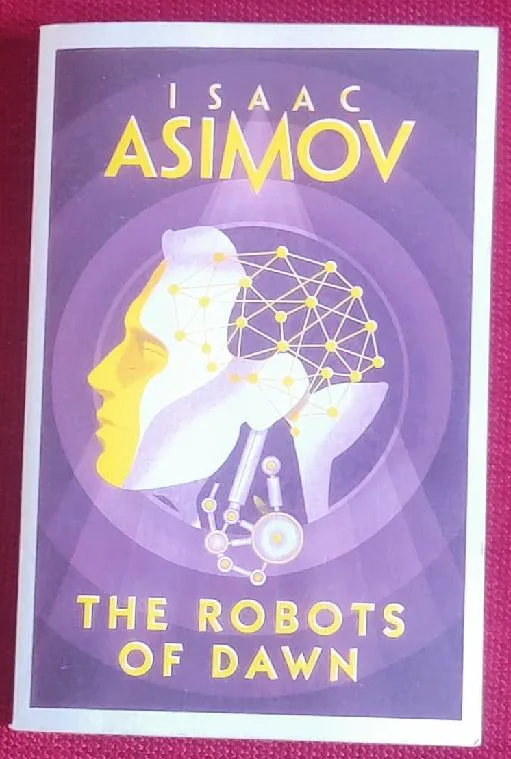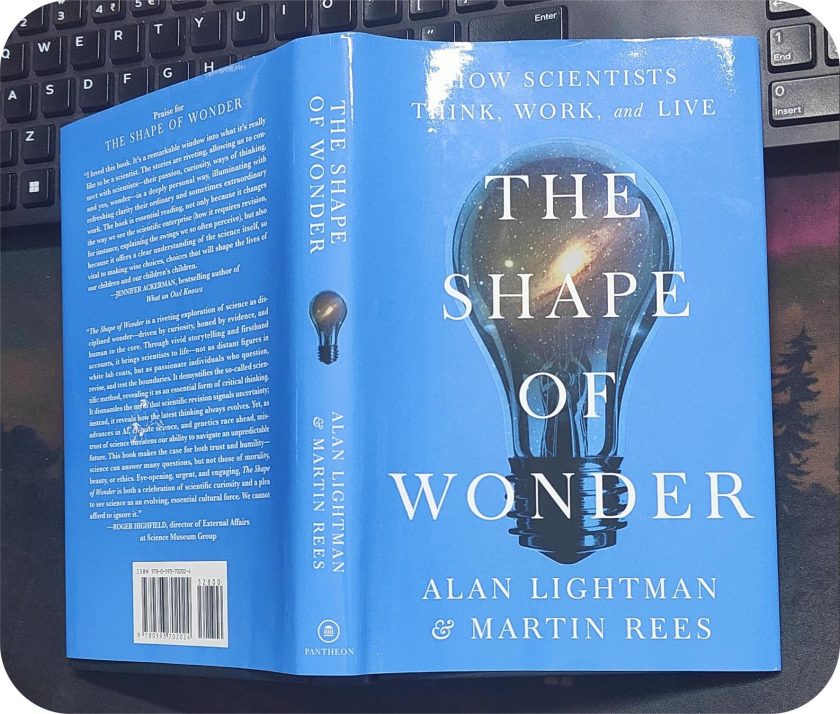
“The Robots of Dawn”, published in 1983, is the third novel in Asimov’s Robots series, following “The Caves of Steel” (1954) and “The Naked Sun” (1957).
Isaac Asimov is one of my favorite science fiction writers. Even after nearly four decades, his work remains incredibly relevant today. His plots are fast paced and characters feel so lifelike, even the robots, which are portrayed with such depth and realism. With positronic robots in the mix, he crafts stories that explore the loopholes in the Three Laws of Robotics, which he himself created.
As expected, “The Robots of Dawn” is another space detective story. The ideas that are developed in this novel – such as the behavior of robots, the ethical implications of artificial intelligence, and the nuanced interplay between law and morality – are later morphed into the laws of human behavior in his Foundation novels.
In a way, we can say that this book lays the ground work that later becomes integral to the philosophical underpinnings of the subsequent Foundation series.
The Plot
Talking about “The Robots of Dawn”, the story is set on the planet Aurora, where a humanoid robot named R. Jander Panell is discovered “dead” a.k.a inactive. Detective Elijah Baley is called from Earth to investigate the case. He is again assisted by R. Daneel, an advanced “Spacer” robot with a humanoid form. He was first introduced in “The Caves of Steel”. In this novel, another similar robot but with basic functionality is introduced called R. Giskard.
As soon as the duo—Baley and Daneel—arrives on Aurora, they are welcomed by Dr. Han Fastolfe, who had actually recommended Detective Baley to solve the case. Dr. Fastolfe is a brilliant roboticist, only he possesses the unique knowledge needed to cause the humanoid robot Jander to malfunction. However, Detective Baley must clear Fastolfe’s name, as the case is entangled in a broader power struggle on the planet over who will lead the next wave of interstellar pioneers: Earthmen or humanoid robots. And this leads to an investigation over the future direction of humanity and its relationship with robots.
The murder mystery or the reason behind the malfunctioning of robot Jander Panell has a deeper significance as it symbolises a microcosm of a broader, generation-spanning conflict between Earthmen and Spacer robots. Asimov has interestingly explored and illuminated some intricate issues, like:
- The nature of humanity.
- The role of robots in society.
- Who will lead the next phase of human expansion into the galaxy.
All these within the permutations and combinations of his three laws of robotics, which were:
- A robot may not injure a human being or, through inaction, allow a human being to come to harm.
- A robot must obey orders given it by human beings except where such orders would conflict with the First Law.
- A robot must protect its own existence as long as such protection does not conflict with the First or Second Law.
As the investigation progresses, we find that the malfunctioning of Jander Panell is not a straightforward consequence of mechanical failure. Instead, it reveals a hidden agenda connected to the larger political tensions on Aurora.
With dramatic confrontations involving various people on the planet, along with the protagonist’s struggle with agoraphobia, the resolution of the case leads to unexpected revelations. Eventually, the climax of the novel shifts towards the theme of interstellar colonization and sets the stage for future developments explored in Asimov’s subsequent Foundation series.
Technological Nostalgia and Human Dynamics in Asimov’s Vision
I’d like to mention that certain technological elements envisioned by Isaac Asimov appear less advanced compared to our current technologies, such as:
- Communication – the bots in this book, speak to each other verbally rather than using modern communication methods like Wi-Fi or other wireless technologies.
- Navigation – The robots rely on preloaded maps for navigation instead of real-time GPS systems.
- Driving – The robots operate vehicles manually rather than having integrated AI for fully autonomous driving.
- The “Astrosimulator” – Device that creates the sensation of being in space. It can be compared with our contemporary virtual reality goggles.
These observations highlight how speculative fiction often reflects the technological and cultural context of its time, while allowing for the actual future to evolve in ways that may differ from those predictions.
Another noticeable thing in the book was how societal upbringing influences individual behavior, preferences and relationships. For example, Gladia, who was raised on the planet Solaria, is accustomed to different societal protocols. When she moves to Aurora, she struggles to adapt due to the cultural differences and norms of her new environment.
Also, Detective Baley’s thinking process is an interesting one to follow. And with the author’s deductive and logical writing, it became a compelling and engaging exploration of problem-solving and analysis.

Takeaway
Isaac Asimov crafts a world where robots are an integral part of humanity. And in this diaspora of spacer worlds, he explores the essence of what it means to be human. In simple words, by imagining advanced societies, technologies, and interactions, he not only provides a glimpse into possible futures but also reflects on current human traits and potential developments. In addition to ethical, social, and philosophical challenges that could arise as we advance.
An excellent book from the author, who continues to surprise me with each work I read. The description of the various Spacer Worlds, their habits, the use of “personal” and “spicer” on dining table is quite fascinating.
Asimov is great at creating big, unforgettable characters—both human and robot—and making you care about what happens to them. Highly recommended!




[…] found a similarity between City of Illusions and Asimov’s The Robots of Dawn in how both stories deal with truth being carefully hidden by those in control. In City of […]